| Umělec magazine 2009/1 >> THE ARCHITECTURE OF DYSTOPIA, Architecture and power in London today | List of all editions. | ||||||||||||
|
|||||||||||||
THE ARCHITECTURE OF DYSTOPIA, Architecture and power in London todayUmělec magazine 2009/101.01.2009 Srećko Horvat | dystopia | en cs de es |
|||||||||||||
|
In the past two years we had the opportunity to watch two excellent British science-fiction films depicting the near or perhaps distant future of the island we know as Great Britain. The first of the two movies, Children of Men (Alfonso Cuarón, 2006), tells of London in the year 2027. Due to global destruction and ecological catastrophe no human child has been born for 18 years and human civilization as we know it is perhaps facing extinction. In the second movie, 28 Weeks Later (Juan C. Fresnadillo, 2007), the entire British population has been contaminated by a lethal virus introduced in the film's prequel. The military has secured a small part of London while "the living dead," zombies, continue to ravage around. One thing that connects these two post-apocalyptic films is architecture.
Thanks to efficient interventions by the directors of both movies, London has been simply "polished" in order to give us a glimpse of its near future—a future one can imagine. We are not talking of special effects or architectural interventions like those seen in Blade Runner (Ridley Scott, 1982) or Brazil (Terry Gilliam, 1985). On the contrary, London has been subtly turned into a dystopic city by emphasizing its existing urban characteristics. For instance, in both movies, Children of Men and 28 Weeks Later, the CCTV cameras we can see at every step even today are strongly accentuated. From this perspective, the two movies seem not to belong to the genre of science-fiction, but rather are a brilliant detection of the current state of affairs in which public places and civil rights are frequently being abolished. In Children of Men, there is one beautiful scene in which our hero, Theo, pays a visit to a wealthy friend who lives in a building remanisant of the well-known Tate Modern. What is memorable about this scene is the big statue of David, standing at the entrance to a large room, which would better be defined as an entrance to a private art gallery—and the fact that Guernica by Picasso is hanging on the dining-room wall. In the midst of global decadence, with the only place still hanging on being London, a special class of people, like Theo’s friend, has been put in charge of preserving the most significant art in history. What probably went under the radar for most of the film's audience is that at the very moment Theo steps out of the car, the ripped out piece of a wall depicting the famous creation by Banksy, Kissing Bobbies, had been hung in the lobby of the same building. Apart from honoring Banksy’s work, the director’s selection of art pieces places confronts us with serious questions about the art market and, most of all, it indicates that in the near future at least some street art works will be accepted as equal to those presented in mainstream art. The history of urban interventions, which, in spite of their mutual differences, can be reduced to a general notion of street art, goes back to the 1970s, although the trend of painting graffiti, generally associated with the hip-hop subculture, existed before that time. Street art is special for two reasons: first because the main means of expression has evolved to be more than just graffiti, and secondly urban interventions are nowadays often connected with a political statement. The best examples are slogans from May 68 Paris that, by their contents if not by their form as well, go side by side with what today we generally consider being street art: Soyez réalistes, demandez l’impossible (Let us be realistic and ask for impossible!), On achète ton bonheur. Vole-le (They are buying your happiness – steal it!), Lisez moins, vivez plus (Read less, live longer!), L’ennui est contre-révolutionnaire (Boredom is counterrevolutionary.), Ni Dieu ni maître (Neither God, nor master!), Il est interdit d’interdire (It is forbidden to forbid!), etc. Even Jean Baudrillard said that the "genuine revolutionary media in May 68 were walls and graffiti, serigraphs and banners in hands, a street where the word was being exchanged—all that was spontaneously written, dispatched and sent back, moving, happening at the same place and at the same time, mutual and contrary." Moreover, according to Baudrillard, the street is an, "alternative and subversive form of all media because the street is not like them, objectified support of messages without response, a remote transit web; the street is a clear space of symbolic exchange of the word, fugacious and mortal as it is, the word which does not reflect its meaning when displayed on the platonic screen of the media."1 It is exactly within this context that today’s street art is to be understood. Classic graffiti and street art share the same awareness of "having the right to send a message." The street becomes their medium, but seperates them by the divided intention of making the message even more subversive by preserving it, versus allowing at the same time it to be lost due to mere Art for Art’s Sake. In this sense we could consider Parisian graffiti to be the origin of street art. The name of Blek Le Rat should be mentioned here as the greatest. Blek Le Rat was among first to use templates instead of "classic" graffiti methods. Moreover, it was Blek Le Rat who first drew little rats on streets—a motif that would make Banksy famous. In 2005, Banksy acknowledged his predecessor. "Every time I think I drew something at least a bit more original, I discover that Blek Le Rat had already done that," he said. "Only, he did it twenty years before me." Another important figure is Jean-Michel Basquiat, a New York artist who made his beginnings with graffiti as a medium in order to end his career with neo-Expressionism during the 80s. Instead of creating classic graffiti, which had a tendency for aesthetic perfection, he would write the famous SAMO slogan over Manhattan buildings, the abbreviation for same ol’ shit. In one of his early interviews he gave to Glenn O’Brien, the journalist called him a "language-oriented" graffitist, which probably is the most appropriate description. It points out the most important difference compared to previous graffiti. Basquiat was most likely the first "street artist" who entered the world of profitable arts, helped, or not helped at all, depending on the point of view, by no less than Andy Warhol. But Banksy entered the art market when Christina Aguilera bought the original of his Queen Victoria, which depicted the monarch in a lesbian act, for £ 25,000. All of a sudden, he became a new Andy Warhol (or Basquiat, for the sake of the matter). In 2006, Sotheby’s sold his pictures of Kate Moss for £ 50,400, while at the same auction his green Mona Lisa was sold for £ 57,600. A few months later, in February 2007, Sotheby’s sold his work titled Bombing Middle England for a whopping sum of £ 102,000. In that same month the owners of Sotheby's decided to sell their entire building to an art gallery due to the particular graffiti on the auction house's facade. In April 2007, a record was reached: Banksy’s work titled Space Girl & Bird hit the roof with a price of £ 288,000. Despite the popularity of his art pieces, there is very little information about Banksy. He once went to Sotheby’s and wrote "We are getting rich on Banksy" (in case you had any doubt, the slogan was sold next day for ₤£ 16,999). When in May 2005 he won an award as the greatest British living artist he clearly did not show up at the award ceremony. What Banksy thinks of the arts establishment he showed in March 2005 with the subversive action of simply hanging his art pieces on the walls of New York’s most revered museums: the Metropolitan Museum of Art, Museum of Modern Art, Brooklyn Museum and American Museum of Natural History. When asked why he did it, Banksy briefly answered, "These pieces are good enough to be there, so why should I wait?" He gave a similar answer when he was asked why he put a picture of Mona Lisa with a yellow smile in the Louvre in 2004, "To actually go through the process of having a painting selected must be quite boring. It’s a lot more fun to go and put your own one up." When asked what was the most perfect untraditional piece of art he had seen outside a museum, Banksy answered, "The most perfect piece of art I saw in recent times was during an anarchist demonstration in London a couple of years ago. Someone cut a strip of turf from the grass in front of Big Ben and put it on the head of the statue of Winston Churchill. Later, the demo turned into a riot, and photos of Winston with a grass Mohican were on the cover of every single British newspaper the next day."2 Banksy’s understanding of art as a subversive and political tool is even more visible in his work. A great number of his pieces are directed against CCTV cameras, which are overwhelming Great Britain more and more each day. One of the best examples of his attitude towards CCTV cameras is the a graffiti piece with the slogan What are you looking at? near a camera in Hyde Park, London. The inscription has the image of a camera pointing directly at it, it is via the piece that Banksy actualizes the semblance, to use Plato’s, or Lacan’s terminology respectively, that there is a democracy in power in Britain, and not a "surveillance society." According to one study, there are 500,000 cameras in London, whereas in the whole of Great Britain there are about 4,200,000—one camera for every 14 people. A regular person, going to work, to school or to college, or a person pursuing all different kinds of jobs around the city, can be recorded up to 300 times just in one day.3 In 2003, so-called Talking CCTV cameras were installed, for video surveillance with loud speakers through which security officers can admonish passers-by. The theory was that the "talking cameras" serve to prevent people ruining the city streets, vandals from drawing graffiti and passers-by from littering the pavement. The fact that "ordinary" British do not go along with this new situation was confirmed by a YouGov survey, published at the end of 2006, in which 79% of Britons expressed the fact that they consider that Great Britain to have become a "surveillance society."4 All this suggests that we already have placed one foot in the door to the dystopic world described by Philip K. Dick in his novel Minority Report, which was adpated into a movie, directed by Steven Spielberg in 2002. In this novel the concept of control is conceived as foreseeing and preventing crime. A policeman’s job is no longer detecting criminals who committed a certain crime in the past, but finding criminals who will commit a crime in the future. Minority Report is a perfect illustration of the world after September 11th, because control becomes interactive. Sophisticated technologies are being used, such a biometry (the analysis of physiological and behavioural characteristics designed to determine or disclose personal identity by examining someone’s finger tips, iris, hand geometry, etc.), and RFID (Radio Frequency Identification), to name a couple. There is a scene in Spielberg's Minority Report adaptation when John Anderton (Tom Cruise) walks through a store and, thanks to RFID, is addressed by an invisible ‘Big Brother’ suggesting, based on data of his socio-economical status and geo-demographic characteristics, which products might be most suitablefor him. This is not just science fiction, but a future present today. As David Lyon shows in his book Surveillance Studies, special loyalty cards issued by superstores are the main means of tracking customers’ purchases and preferences, data which serves to create various consumer profiles and classifications. Once affinities and shopping intervals of customers are established the information can be used to greatly help in targeted marketing, leading to an increase in the corporation’s profits.5 However, as much as Lyon’s book is instructive, explaining different aspects of control and bringing them in connection with Bentham, Deleuze and Foucault, the author is mistaken when he asserts that, "To use infra-red devices to see into a blog-writer’s room at night would infringe personal rights and invade private space. But for blog-writers to describe their nocturnal activities online that is considered their inalienable right to free expression." What is problematic in this statement? We are dealing here with one crucial difference: in the first example, the blogger did not give permission for his privacy to be invaded, while in the second he did. This is what reinforced video-surveillance is all about in Great Britain after a terrorist attack attempt in 2007.6 Today, there is almost no place—and not only in Britain —where, without our permission, we are not daily exposed to cameras; in trams, stores, banks, on the roads, etc. In this sense, today’s society is just a radicalisation of the trend of control, which has already been ongoing for several decades, but what differs it from standard methods of control is its characteristic that more than ever the most advocated reason for it, just like in Dick’s novel, is crime prevention—we are all suspects even before committing any crime. Here we can quote what Hannah Arendt wrote thinking primarily of Nazi Germany and Stalinist Russia, and not of "democratic" Britain, "From a legal perspective, totalitarian substitution of suspected transgression by possible crime is even more interesting then converting a suspect into a real enemy. Possible crime is considered to be nothing less unreal then the real enemy. A suspect is arrested because he is suspected of being capable of committing a crime which more or less fits his personal profile (or his suspected personality)—a totalitarian version of possible crime based on the logic of anticipation."7 Of course, in the era of political correct-ness, such graffiti cannot survive for long. What Banksy did here is "fight back" by depicting a schoolgirl searching a soldier, taking his message and criticism of social reality to the extreme. As if what the artist wanted to say is, "It is not the schoolgirl who needs to be searched—it’s our soldiers!" With his politically incorrect graffiti, which shows a policeman searching a little schoolgirl, Banksy is again referring to that state. At her side are a teddy bear and a schoolbag. Except for being politically incorrect, because it primarily makes an association with paedophilia, this graffiti is at the same time an excellent critique of the "totalitarian switch between suspected transgression and crime" which is no longer characteristic of some former and only seemingly distant totalitarian systems or science-fiction projections like Minority Report, but is a characteristic of England today. Let us take as an example the case of Jean Charles de Menezes, a young man who was killed only a few days after bombs exploded in the London underground because his, "clothes and behaviour seemed suspicious." The policemen who, during their routine working day in the underground, killed that young man who wore a jean jacket, and for that reason was suspicious, have never suffered any consequences up to now. The official justification was that Menezes looked like a terrorist. This story teaches us that the definition of "bad guys" is becoming more and more arbitrary. Just wearing a jean jacket seems to be enough. As shown on the latest British police posters: it is enough to carry two mobile phones, a camera or be doing something suspicious at home to fit the terrorist profile and be denounced as a terrorist. Only few months after these posters become public, there was a comic response to them at the artistic level of Banksy on the Internet. Instead of a stills camera, CCTV cameras were superimposed on the poster saying, "There are thousands of CCTV cameras filming and taking photos of you each day. But if you, as a subject in this free and pleasant land, are wearing a camera, then you are suspected of being a terrorist. Isn’t there something weird in this?" Let us summarize what has been said so far. It is not by chance that in Britain in the last few years dystopic movies like Children of Men, 28 Weeks Later, 28 Days Later, V for Vendetta, and others are being filmed. All this can be described as a symptom of a broader phenomenon and a reflection of the surveillance and control in society, which already today makes London a city where architecture and power are inextricably connected. Moreover, architecture serves as a means of installing power. Art pieces like those made by Banksy are praiseworthy since they emphasize that relationship. We could even go so far as to say that Banksy, by subverting the established rapports of power, manages to create an awareness of the dystopia of our present time. The future has already come. 1 Baudrillard, Jean: For a Critique of the Political Economy of the Sign. 2 Fairey, Shepard. "Banksy." Swindle Magazine (2008). 3 Michael McCahill & Clive Norris, ‘CCTV in London’, working paper No. 6. 4 www.yougov.com. 5 V. David Lyon, Surveillance Studies. An Overview, Polity Press, Cambridge, 2007. 6 It is indicative that German internal affairs minister Wolfgang Schäuble, not long after the attacks in July 2007, using the ‘danger of terrorism’ as an argument, demanded reinforced video-surveillance of the centres of large cities in Germany. This will probably happen after a terrorist attack atempt in Frankfurt. 7 Hannah Arendt, "Totalitarizam" Politička Kultura, Zagreb, 1996, page 175.
01.01.2009
Recommended articles
|
|||||||||||||
|
04.02.2020 10:17
Letošní 50. ročník Art Basel přilákal celkem 93 000 návštěvníků a sběratelů z 80 zemí světa. 290 prémiových galerií představilo umělecká díla od počátku 20. století až po současnost. Hlavní sektor přehlídky, tradičně v prvním patře výstavního prostoru, představil 232 předních galerií z celého světa nabízející umění nejvyšší kvality. Veletrh ukázal vzestupný trend prodeje prostřednictvím galerií jak soukromým sbírkám, tak i institucím. Kromě hlavního veletrhu stály za návštěvu i ty přidružené: Volta, Liste a Photo Basel, k tomu doprovodné programy a výstavy v místních institucích, které kvalitou daleko přesahují hranice města tj. Kunsthalle Basel, Kunstmuseum, Tinguely muzeum nebo Fondation Beyeler.
|







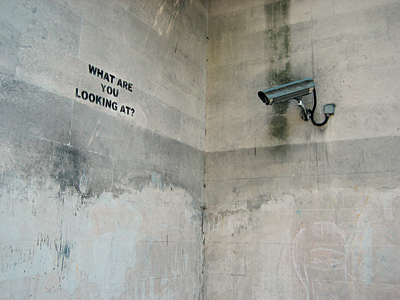


















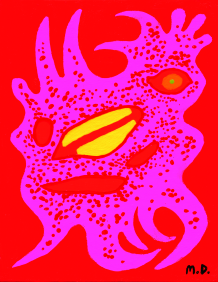




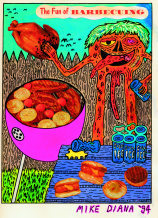
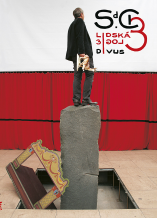
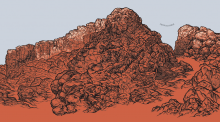
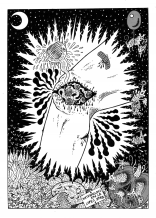


 New book by I.M.Jirous in English at our online bookshop.
New book by I.M.Jirous in English at our online bookshop.
Comments
There are currently no comments.Add new comment